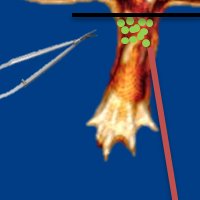Background
Tissue regeneration is the process of replacing tissue lost from damage, disease, age or injury by new tissue. This process is fundamental for life and all animal species to some degree possess mechanisms that can maintain homeostasis and the functional integrity of cells and tissue.
Richard J. Goss, one of the pioneers in regenerative research, summed up the relationship between life, death and regeneration in the words: “If there were no regeneration there could be no life. If everything regenerated there could be no death. All organisms exist between these two extremes. Other things being equal, they tend toward the latter end of the spectrum, never quite achieving immortality because this would be incompatible with reproduction” (Goss, 1969).
However true this statement is, regenerative potential varies quite a bit between different organisms. Humans and mammals in general have not been blessed with extensive regenerative potential and tend to resolve tissue damage events by fibrosis and scar formation. This fibrotic situation results from an inflammatory response to injury that generates fibroblastic granulation tissue that is ultimately modelled into an acellular collagenous scar. This maintains the overall integrity of the damaged organ, but usually reduces function. However, vertebrate species such as urodele amphibians do exist with an unsurpassed ability to recapitulate embryonic development and regenerate tissue and even whole organs and appendages to perfection without any scar formation.
The question, why mammals have lost this apparently ancestral and seemingly highly beneficial trait, has been a driving force in the history of regenerative research. It may be that evolution of warm-blooded mammals susceptible to infections has favoured the individuals with the fastest response to injury, this being a swift immunological response and subsequent fibrosis to seal of damaged parts rather than regeneration, and though regeneration of extremities and non-vital organs is desirable, it is not absolutely essential for reproduction.
The low regenerative potential of humans has far-reaching consequences in medicine: heart, liver and renal failure, arthritis, disorders of the nervous system e.g. amyotrophic lateral sclerosis, multiple sclerosis, Parkinson’s, Huntington’s, and Alzheimer’s disease, burns and traumatic injuries to skin, bones, muscles, joints, ligaments and tendons are all examples of diseases and conditions fundamentally resulting from poor regenerative potential.
Other than the personal consequences for patients suffering from these ailments the cost to society is enormous, and though it is a monumental task to estimate the annual cost of so many different disorders, it has been estimated that the Unites States alone spends more than $400 billion a year on health care and loss of economic productivity as a result of our regenerative deficiencies. Naturally, this has inspired great interest in the field of regenerative medicine seeking to develop and apply future regenerative therapies for human patients. However, it is highly unlikely that regenerative medicine can fulfil this task without a thorough understanding of basic mechanisms involved in regenerative events.
Therefore advancements in the field of regenerative biology, the understanding of basic molecular and cellular processes during tissue regeneration, are a prerequisite for regenerative medicine to develop its full potential.
Thus regenerative biology seeks to describe, characterize and understand regenerative phenomena where they naturally occur in organisms that can be distantly or closely related to us, whereas regenerative medicine seeks to apply this knowledge to generate therapies for human patients.


